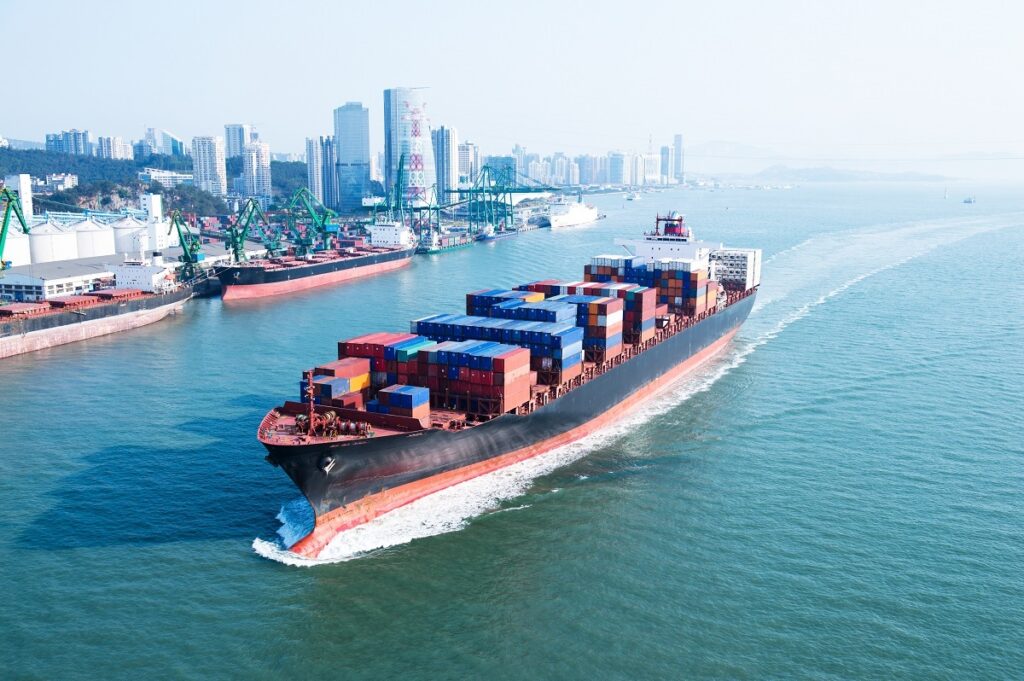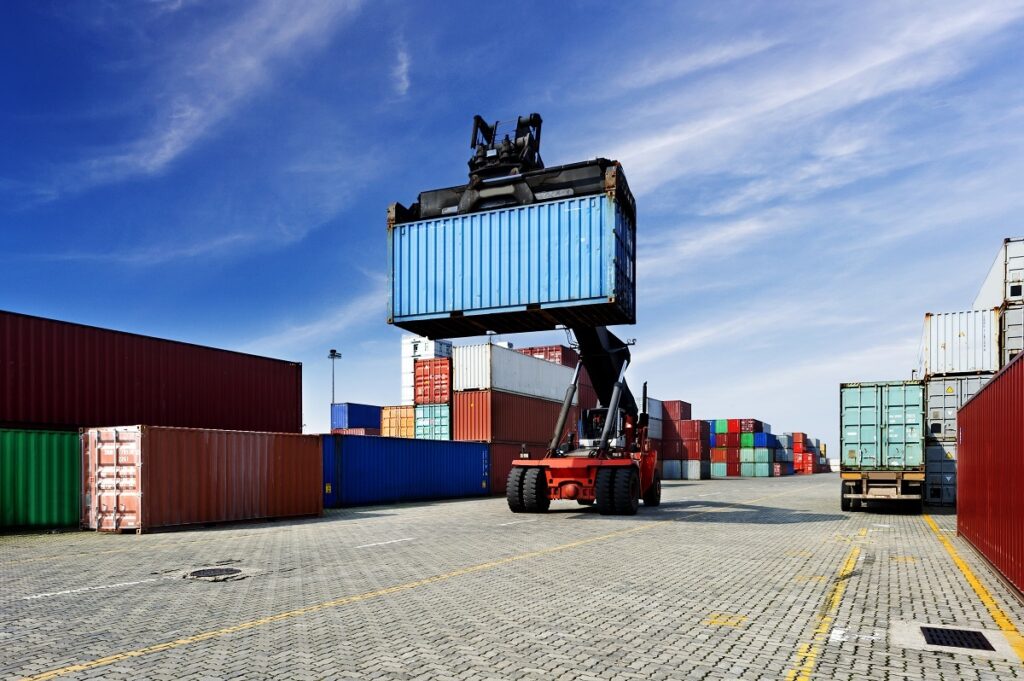Determining whether to choose intermodal shipping or multimodal shipping would depend on how well you know the intricacies involved in each transport mode.
There are numerous factors to consider when choosing the best mode of transport for your business. These include the following:
- The types of goods being shipped
- The distance it is being shipped to
- The duration of its shipping journey
Below are the details you need to be aware of as well as the applicable conditions for each model.
Related article: One Stop Solution for Intermodal Transportation in Canada
What is intermodal shipping?
Intermodal transport is where goods are moved using an intermodal vehicle or container. This type of shipping uses two or more carriers along its shipper-to-consignee journey, each of which has its own independent contract.
Shipments are essentially handled by various shipping companies. Multiple carriers would be involved in the entirety of the journey. Every shipment leg is to be handled by a different transport carrier.

- Intermodal requires special standardized containers as these are to be moved using ships, trucks, freight trains
- These containers are usually large rectangular boxes that can be properly secured onto special trailers
- Intermodal containers are made of durable steel to allow items to be easily transferred into different modes of transport
- Intermodal shipping removes the risks of having to handle shipments directly
- Cargo handling is minimized, security is improved, loss and damage are reduced
- Freight gets to be transported quicker
- Costs are significantly reduced
- Drayage is a type of truck transport utilized between the ocean ports and rail terminals.
- The process of intermodal shipping starts when a truck picks up a load by bringing an empty container to a shipper. The shipper will then fill the container with freight and take it via truck onto a railroad yard. The container will be placed on a train and transferred to its target destination.
- Once the container has reached its destination, it is taken from the train and delivered to the consignee via truck where its contents are emptied in order to prepare it for another load.
How to Know if Intermodal is Right for your Business
The following situations make intermodal shipping the right choice for your shipments.
- If you have finished and intermediate goods that are in 25 tons or less of load units
- Your shipment will travel at a long distance
- If your freight is to move either more than 300 miles or within and beyond 24 hours
- Your cargo consists of intermediate values
- If cargo flow requires to be continuous and be the same quantity such as when sending numerous LTL shipments to the same destination the entire week
Advantages of Intermodal Shipping
There are benefits involved in intermodal shipping, a few of these are the following:
- Shippers have the freedom to select carriers in order to take advantage of less costly rates for each leg of the transport
- Flexibility is achieved as well as the specialized handling of goods during loading and unloading at various ports
- Carbon footprint is reduced by selecting carriers that are environment-friendly
- Shippers gain more equipment access, better capacity control and transit schedule selection
Related article: How Much Does an Intermodal Container Cost
What is multimodal shipping?
Also known as combined transportation, multimodal shipping is where two or more carriers are used yet only one contract is signed via a single carrier who is determined as legally liable throughout the duration of the process.
Only one contract covers the combined or multimodal transport of shipment. A minimum of two yet even more than two modes of transport are allowed. Therefore only one carrier is legally responsible for all the carriage despite it being done by various transport modes such as road, sea, or rail. One bill of lading is used for the entire how to buy valium online shipment. Usually, the carriage is done by sub-carriers and the legal carrier is known as a multimodal transport operator. A single company would be responsible for transporting your freight in all legs of the journey.
- The process starts by getting the services of a company that offers all the mentioned transport modes
- Using an agent is another way to set up a single contract. This way, an agent will be doing all the negotiation while your job is to keep track of the contract. The same agent will also be in charge of the unloading, loading, and delays.
Advantages of multimodal shipping
The following are few of the benefits of multimodal shipping:
- Companies are able to handle delays in one specific shipment leg without having to involve you
- Each aspect of the journey is handled by a single provider thus assuring you peace of mind
- Shipments are efficiently tracked and monitored via a single transport carrier
- Remote parts of the world become accessible
- Delivery time becomes efficient
- Expenses in shipper’s logistics coordination are minimized
How to Choose Between Intermodal vs Multimodal Shipping
Selecting between intermodal and multimodal shipping would depend on your needs and specific business specifications. The main difference between both is the number of contracts required for each.
While multimodal shipping sees only a single contract for one carrier throughout the entire shipment journey, and only has a single and Combined Transport Bill of Lading, intermodal shipping requires numerous contracts. A contract is needed from the ocean carrier or freight forwarder, another contract is required from a trucking company, and one more contract is necessary for rail transportation. Separate Bill of Ladings is therefore seen in intermodal shipping.
However, multimodal shipping gives the shipper an ability to hold a single carrier liable for the freight’s movement. Tracking shipment is also easy as there is only one contact needed, and a sole entity is responsible for responding to delivery needs.
But intermodal shipping allows carriers to be freely selected for every shipment leg based on the service they provide as well as price. The shipment can also be stopped at any point in the journey for whatever reason. Selecting carriers is also done in a flexible manner and can be based on equipment concerns or issues in space.

The following are questions you need to ask prior to choosing between intermodal vs multimodal shipping.
- How many independent contracts do you prefer? Would you want a single contract or multiple contracts with numerous carriers?
- How much is the total difference in terms of cost when you use multiple carriers?
- How much is the difference in terms of total cost between the two options?
- Will every option have a heavy impact in terms of cost and inventory turns? If so, how?
- How much transit time and administrative coordination is saved when one is chosen over the other?
- What is the impact on the environment of each choice?
- What is the quantity of paperwork produced for each option?
Conclusion
The best way to determine whether intermodal or multimodal shipping is right for you is to discuss these with your team, freight forwarder, and carrier base. Arming yourself with the knowledge of intermodal and multimodal’s intricacies will save you the time and energy you need to focus on more critical aspects of your business.
You will also be able to know what works best for your shipment. Understanding the benefits of each transport mode will keep the shipment process streamlined and efficient. Miscommunication will be minimized, and any unnecessary misunderstandings will be reduced.
Call OCT Freight Shipping today to learn more about intermodal and multimodal shipping!




